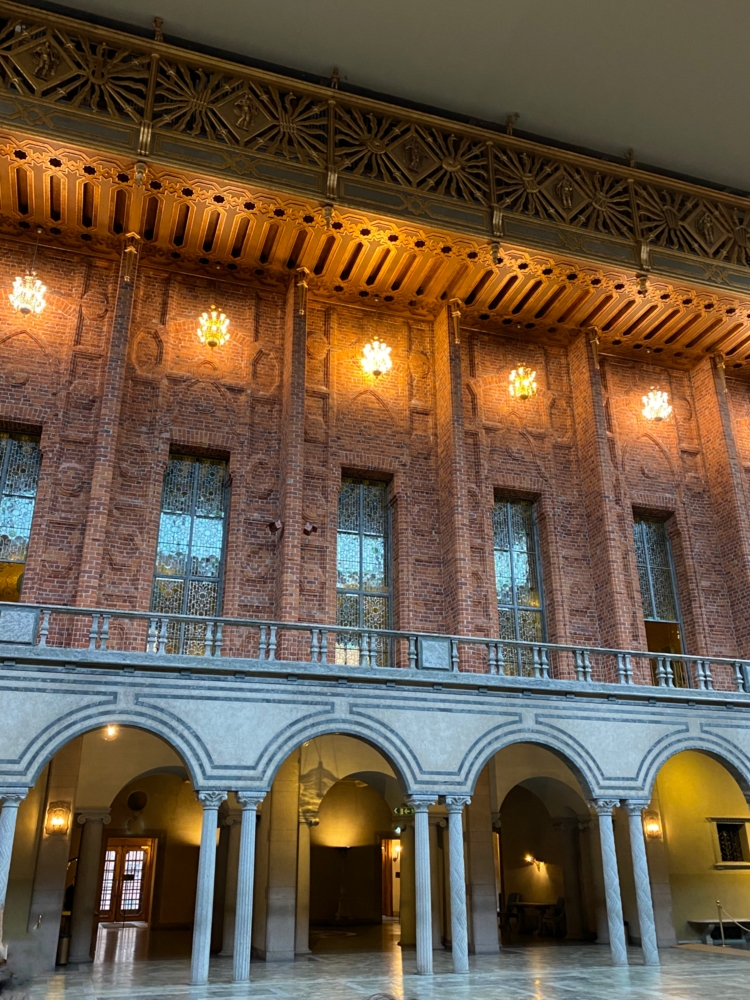The Stockholm City Hall is a building full of responsibility.
It is the most emblematic building of the Swedish capital and even of the country as a whole, as much by its architecture as by its functions, notably that of hosting the annual Nobel Prize banquet. Few buildings in the world have such a weight on their shoulders!

It was built between 1911 and 1923 by the architect Ragnar Östberg, the most representative figure of the Swedish national romantic movement, who dared to realize in this project the most extreme fantasies of modern art of the time.
Built on the tip of the island of Kungsholmen on the shores of Lake Mälar, it has been compared to the Doge’s Palace in Venice, with which it shares the confidence that comes with great respectability.
But what is most interesting is the way in which the architect thought about his its construction and interpreted the program he was given. If Although he had almost carte blanche on his artistic choices, he was nevertheless instructed to symbolize, in this building, the history, the situation and the activity of the city of Stockholm. A challenge as much as a program that he succeeded beyond his expectations.
Everything was scrupulously thought out down to the smallest detail. Seen from the outside, this 125 m long and 75 m wide quadrilateral is topped by a roof covered with light green copper plates.
This might seem insignificant, but it turns out that all of the 3,000 plates were donated by the city’s residents and each bears the name of its donor. A great initiative!
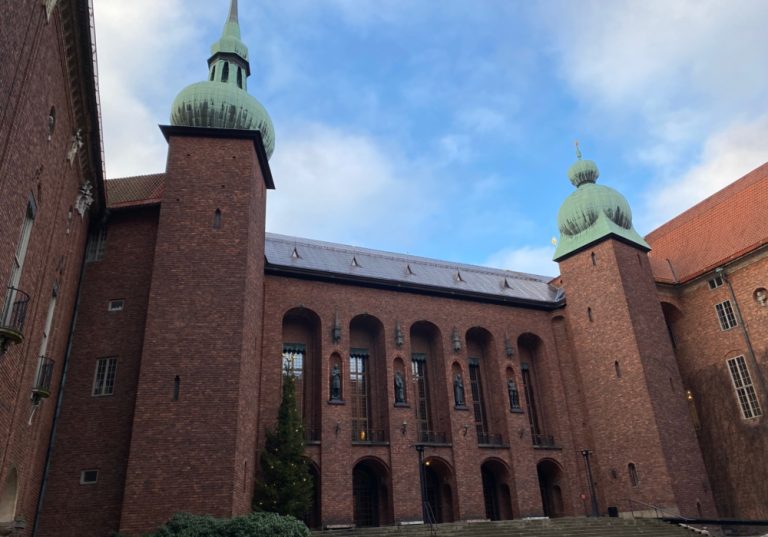
Moreover, Ragnar Östberg succeeded in combining with genius the Dutch-Scandinavian tradition with the by incorporating the most daring forms of his country’s art, sometimes even with a touch of provocation.
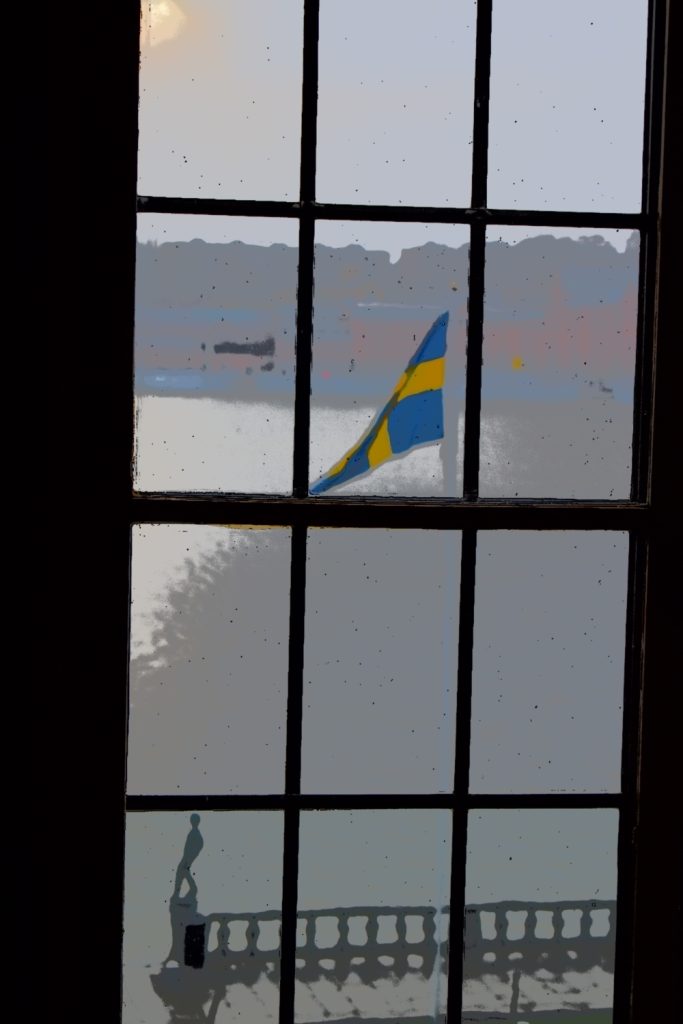
For example, the austere brick courtyard, which opens onto the lake and a large garden terrace, is decorated with statues, including three marble nudes representing the painter, the poet and the writer.
It so happens that these statues have the features of three artists of the time, namely Fröding, Strindberg and Josephsson, and this interpretation has provoked strong controversy in the Swedish press of at the time, which did not easily accept to see famous contemporaries represented naked, or more or less! Subtle wink!
Moreover, Östberg liked to play with contrasts as revelations of his choices. If the exterior of the building shines by its simplicity, inside the decoration holds an infinitely more important place. Almost all Swedish artists of some renown have participated.
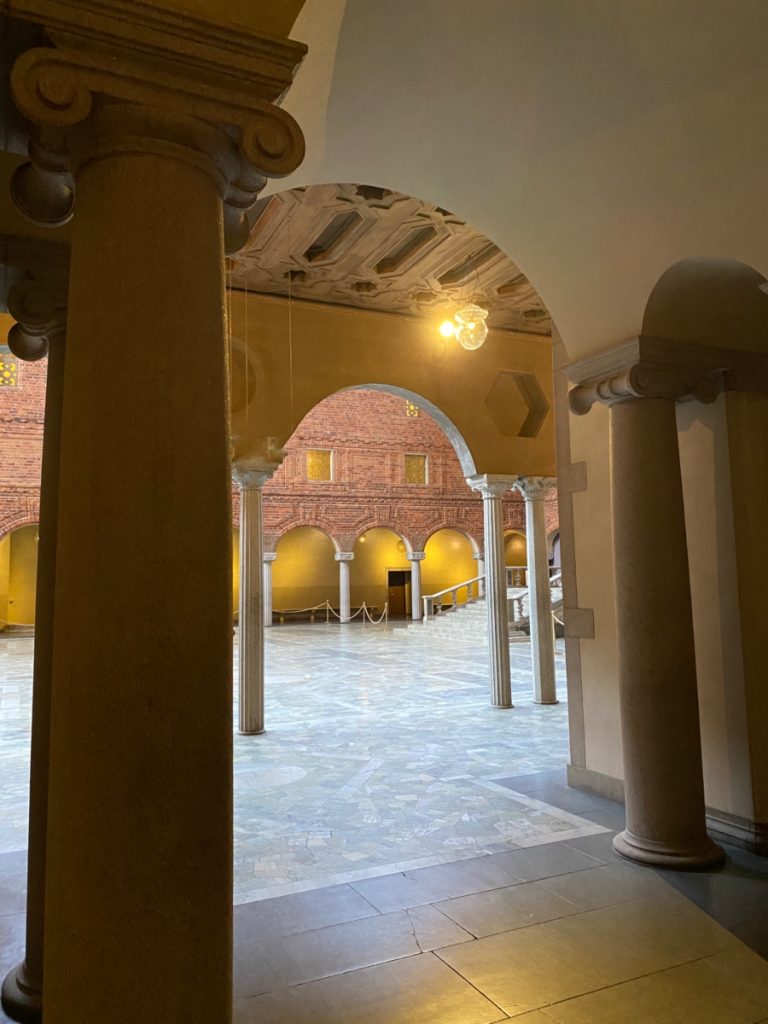
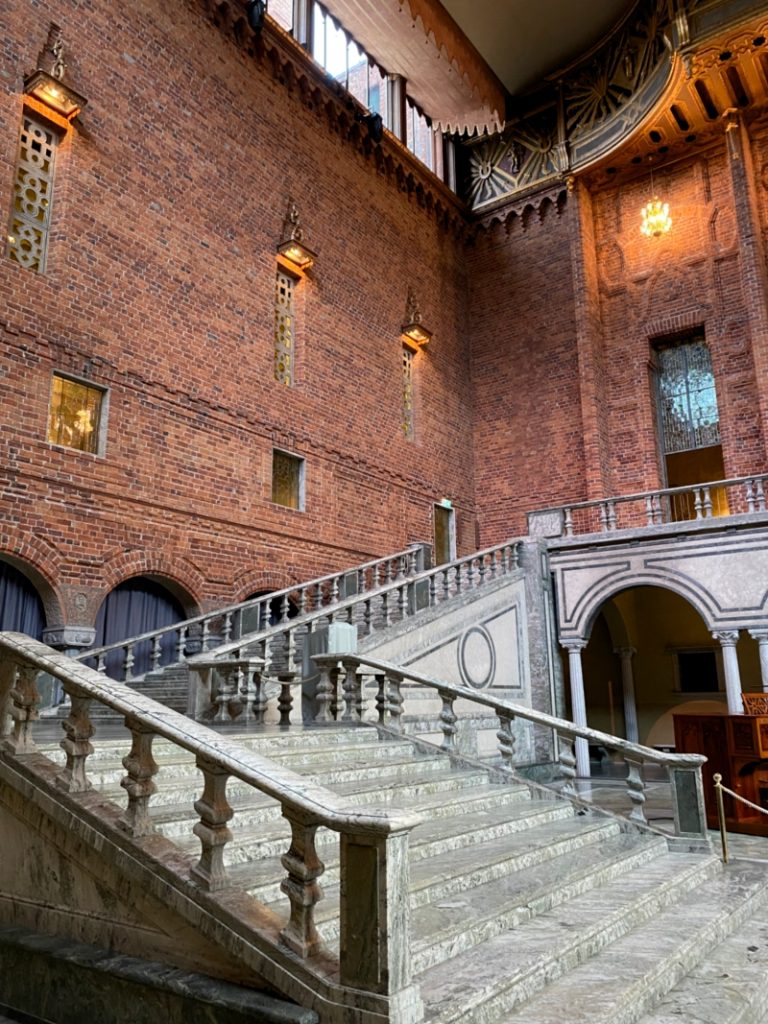
First of all, the immense “blue hall”, which is blue in name only, is one of the jewels of the place. This hall of 1500 m2 includes a monumental staircase leading to a loggia. Its floor is entirely covered with Kolmärden marble, also called green marble of Sweden. This is the same marble that was used in the Opéra Garnier in Paris.
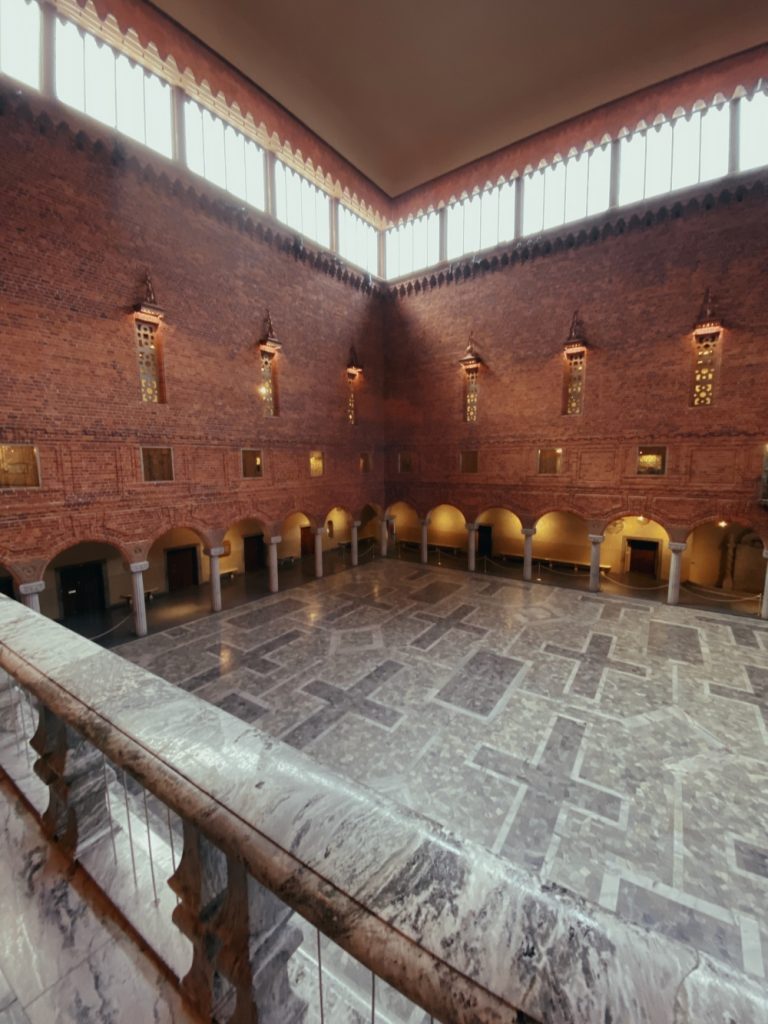
If the walls of this hall were originally to be painted blue, the architect, seduced by the natural beauty of the brick, changed his mind and left it dressed in a sobriety of great elegance.
On the first floor, we find the audacity of Ragnar Östberg who again plays with exaggeration and extremes. In perfect opposition to the bare brick, the “golden room” has its walls covered with over eighteen million pieces of glass and gold.
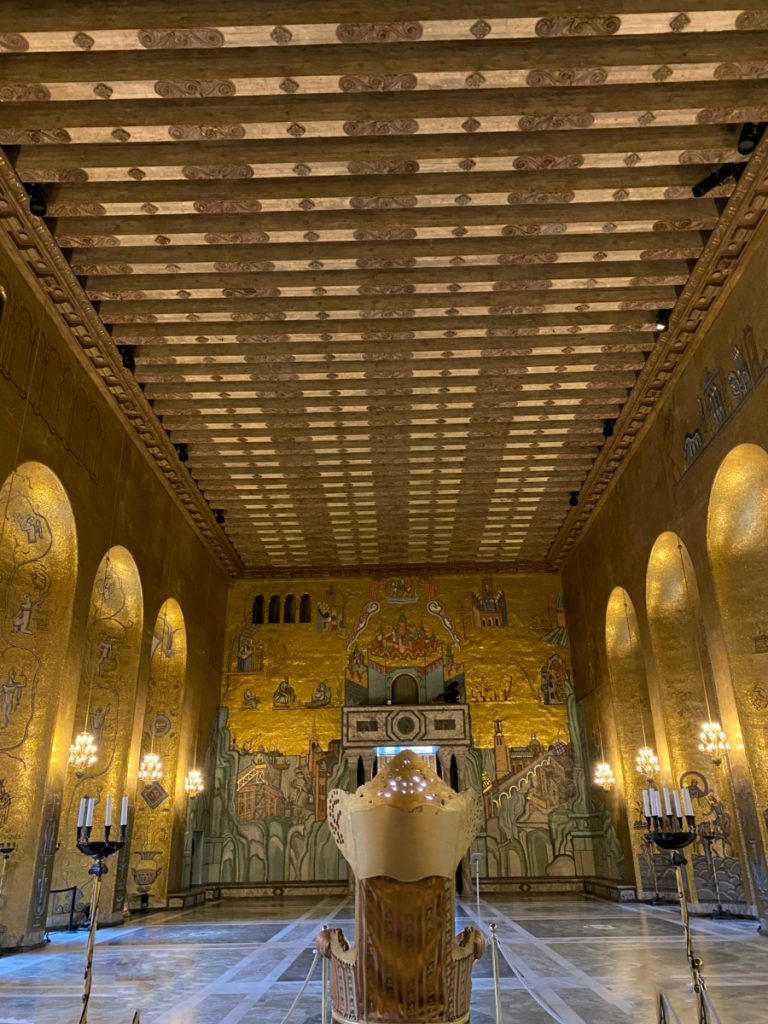
It is certainly the part of the building that has raised the most protests.

The decorator, Einar Forseth, set the scene for the ancient Vikings who, with the brightly colored monsters painted on their boats, terrified the inhabitants during their forays along the coast. He also remembered the naive decorations that Swedish peasants continued to paint in their homes until recently.
He has masterfully combined the richness of color with the archaism of form over 44 m in length, 14 m in width and 12 m in height. A feat achieved in record time that also gave rise to a few small errors making the work even more intriguing, endearing. Interesting challenge!
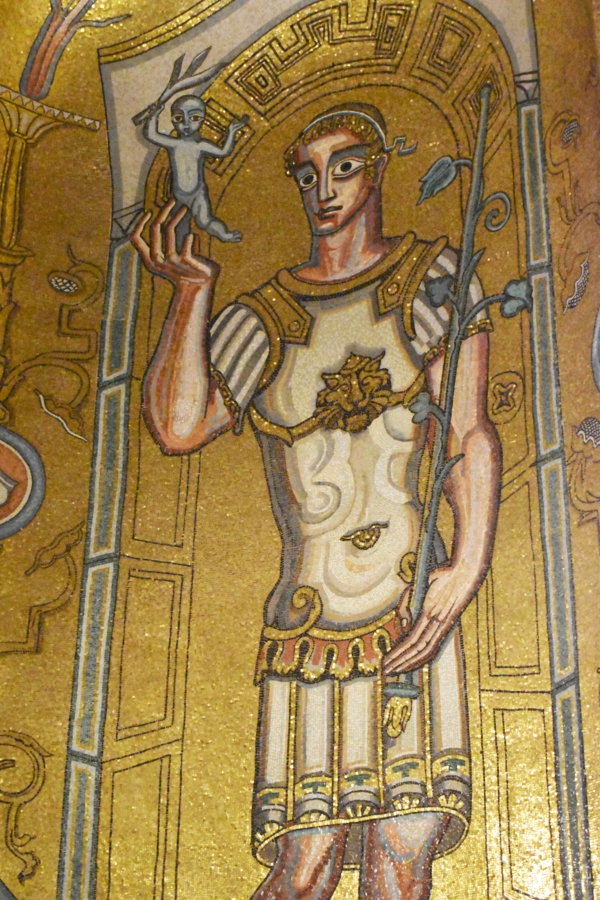

Finally, to top it all off, if I may say so, is the building’s tower, 106 meters high and topped with the three crowns, the ancient symbol of Sweden, which the architect wanted to be higher than the 105.6 meter high tower of Copenhagen’s city hall.
As we can see, Ragnar Östberg has met all the requirements implied in his commission.
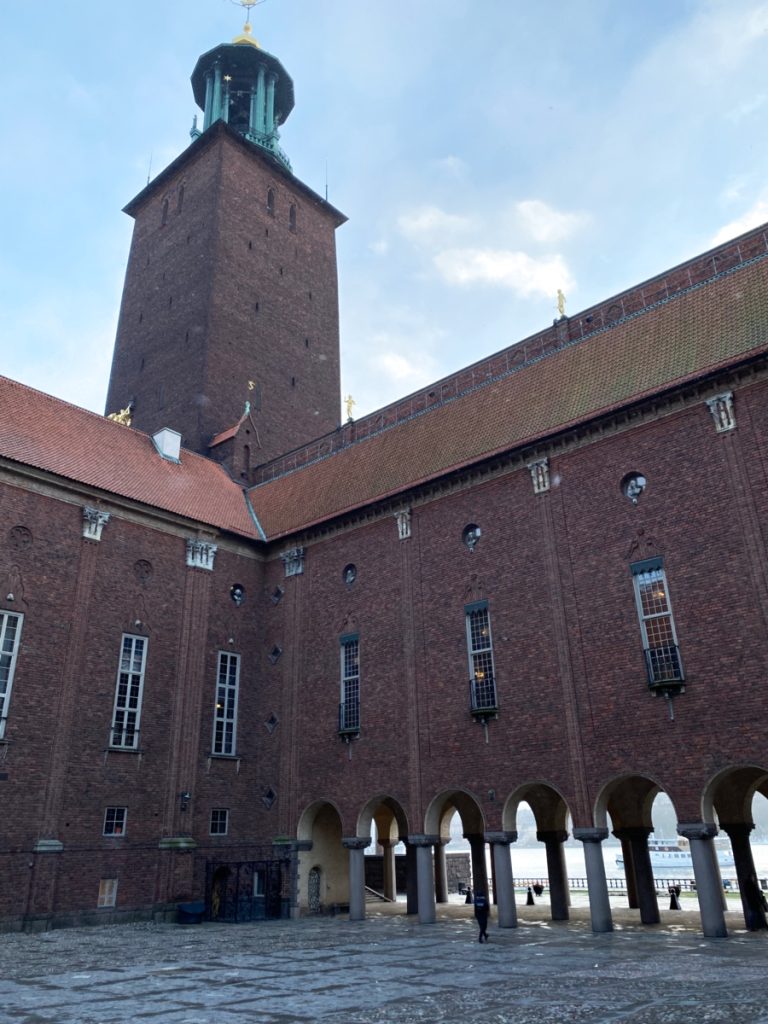
But the most incredible thing happened later.
While this city hall achieved both program and stylistic criteria dear to Stockholm, nothing could suggest at the time that it would one day become the venue for the country’s most emblematic ceremony, the annual Nobel Prize banquet.
It is important to know that after the award ceremony in the concert hall (Konserthuset) of Stockholm, the guests are welcomed at the City Hall where the glittering Nobel banquet is held. It is believed that the highest standards of the kingdom were met in this place in terms of decorum, precision, magnificence and symbolism, as the Nobel Prize festivities are legendary.
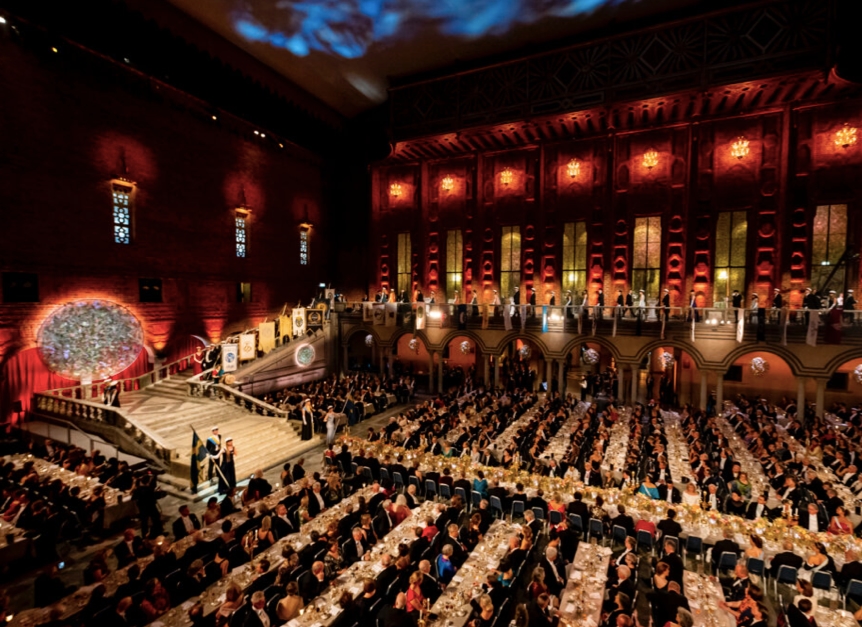
The banquet is held in the famous “blue room” and today more than 1250 guests are seated around long tables, with the head table in the middle.
Everything, absolutely everything in this banquet is thought out to the millimeter.
It is amusing to draw a parallel between the building and the banquet because, for both, nothing was left to chance. The Nobel Prize banquet could not have dreamed of a better setting, and the City Hall could not have received more prestigious guests. Both rival each other in the excellence of the representation.
Press descriptions leave one breathless:
“On the day of the Nobel Banquet the Blue Hall is laid out with 65 tables in exact positions using 470 meters of tablecloth. 30 people wearing white gloves begin the time-consuming task of laying out 6,730 pieces of porcelain, 5,384 glasses and 9,422 pieces of cutlery. The same care is given to each place setting, whether it is for the table of honor or the tables for students. In 1991, the Nobel Foundation ordered a specially designed dinner set in time for the 90th anniversary celebration of the Nobel Prize. The dinner service reflects Swedish design and culture and has become a total success.”
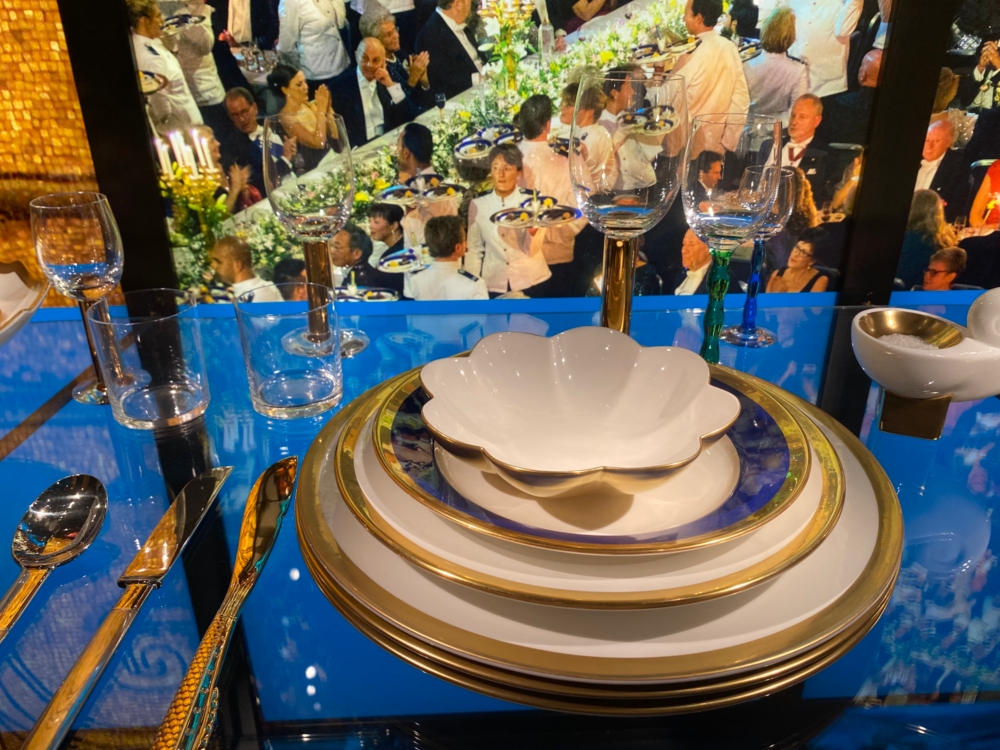
Or:
“The menu is kept strictly secret until the waiters ceremoniously make their entrance, bringing the dishes. The dishes are edible masterpieces prepared by Swedish chefs.
In keeping with the Swedish spirit of culinary innovation, the four-course menu emphasizes sustainable cuisine and Swedish products, such as Kalix caviar and forest-picked chanterelles. Pastry chef Daniel Roos, who has designed the desserts for the Nobel Dinner since 2014, sourced raspberries from Trellenorg for his 2019 creations. To avoid waste, he made a fine powder with the remaining raspberries.”
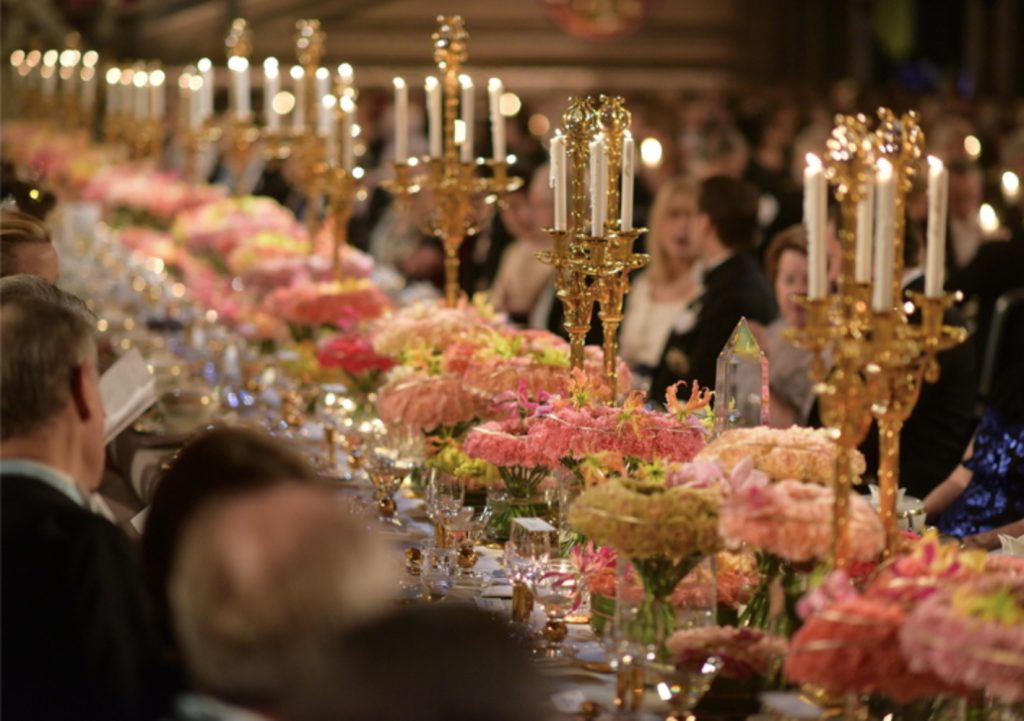
Also:
“Every Nobel Banquet has a particular theme. This is reflected in the decorations and the entertainment for the evening. Lilies, orchids, gladioli and roses in striking colors are used to enhance the theme for the evening. These flowers come all the way from San Remo, a center for flower cultivation on the Italian Riviera where Alfred Nobel spent the last years of his life. As a tribute to his memory the Azienda di Promozione Turistica di San Remo donate the flowers that are made into tasteful arrangements by professional florists. Every year, more than 23,000 flowers are used as decorations in connection with the Nobel festivities.”
And in conclusion:
“This Nobel Prize is the most beautiful public relations operation that this small country can imagine. All over the world, on a fixed date, we can finally point to Sweden on the globe.
The Swedish Ministers of Culture have taken advantage of this opportunity by using their dresses as messengers of the problems caused by climate change. A white one to signal the melting snow; a black one with holes to stigmatize forest fires…

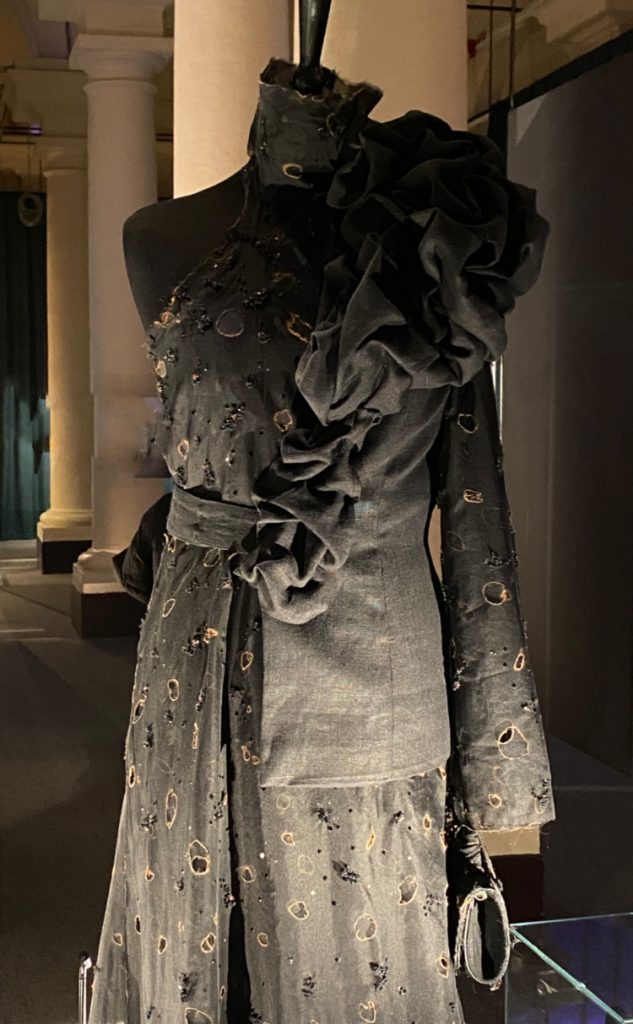
When Ragnar Östberg was given the task of creating a symbol with this City Hall, he probably had no idea that his work would in fact become the most famous and most publicized monument not only in the city of Stockholm but in the entire country.
Hats off to Mr. Östberg, for his stroke of genius!
Text from Claudia Gillet-Meyer, photos from Régis Meyer
MORE INFORMATIONS :
https://www.nobelprize.org/ceremonies/menus-at-the-nobel-banquet/




